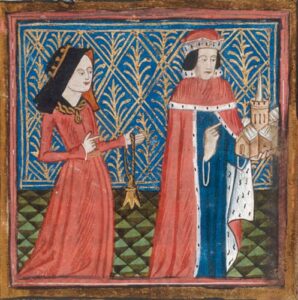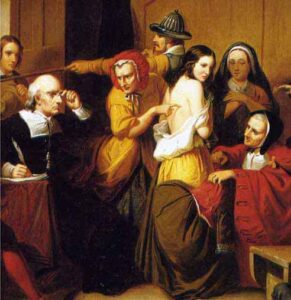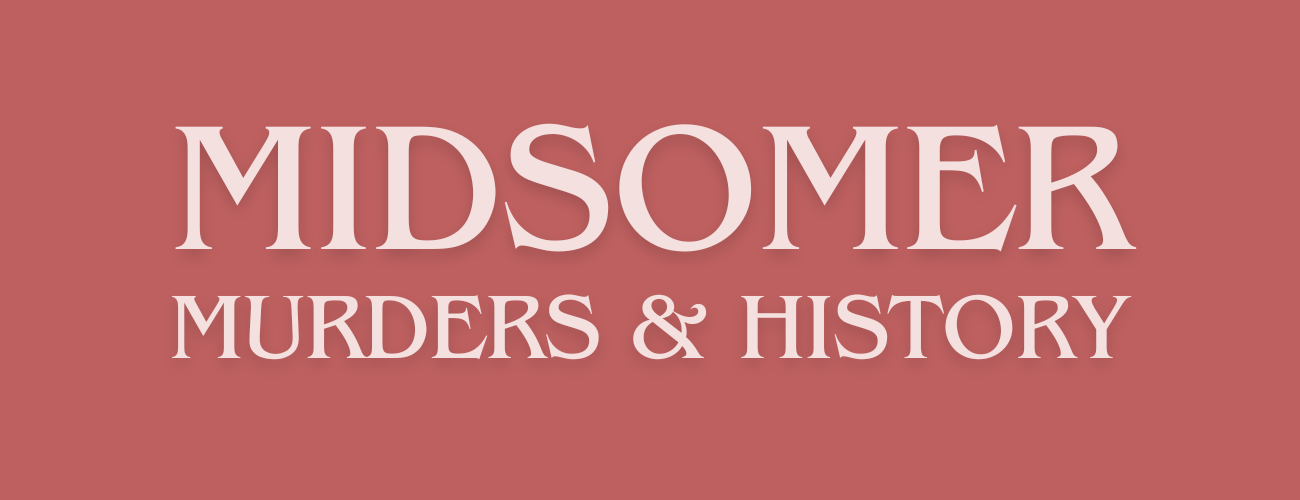•
(Caution: Contains spoilers for Episodes: S05E02: A Worm in a Bud, and S07E06: The Straw Woman)
Diesen Beitrag gibt es auch auf Deutsch.
•
Witch-hunting is not a medieval invention. It was not until the early modern period, i.e. the 15th and 16th centuries, that the persecution and condemnation of women who did not conform to the ideal of womanhood began: A God-fearing person, submissive to all men and authorities.

A woman accused of being a witch was often the stereotypical opposite: a self-confident and independent woman, or a woman with better knowledge of health and healing than her male counterparts… this did not fit into the patriarchal view of humanity, but placed her in a dilemma. The only solution considered by the majority of men was to punish, humiliate, torment, torture and, if necessary, murder women if the devil could not be driven out by bestial pain.
The first woman to be condemned as a witch in England became famous through William Shakespeare’s play Henry VI: Eleanor Cobham, Duchess of Gloucester. The noblewoman was the Duke of Gloucester’s mistress, then became his second wife. In 1441 she consulted astrologers who told her that King Henry would soon fall ill and die. The king, angry and probably frightened, heard of this prediction and questioned the astrologers. The astrologers were apparently so afraid of repeating their prediction to the king that they scapegoated Eleanor, claiming that she had instigated the necromancy. The king believed the astrologers and convicted Eleanor of witchcraft.
Well, Eleanor initially fled to Westminster Abbey, but she too was found guilty. She was not murdered, however, but was sentenced to life imprisonment in 1442. She died ten years later at Beaumaris Castle on the Isle of Man.
James I and the Witchfinder General

The first witchcraft laws existed as early as the 16th century, but a peak in the number of trials did not occur until King James I’s Witchcraft Act of 1604, which he enacted a year after the union of the Scottish and English crowns.
He was not only convinced that witches existed, but was eager to prosecute as many as possible. Not only was he convinced that witches existed, but he was eager to prosecute as many as possible.
In particular, Matthew Hopkins, Witchfinder General by profession and passion, was a ruthless assistant paid by the towns to follow the trails of witches, and was said to be responsible for 300 trails.
A mole or a flea bite was enough for a conviction, as they were considered ‘devil’s marks’. If you felt little pain when you were lightly pricked with a needle and no blood came out, you were a witch or a witcher. (Matthew Hopkins also used fake needles that bent when they hit the skin, so no pain was felt).
In total, there were at least 2,500 witchcraft trials in England in the early modern period. Between 500 and 1,000 people were murdered, the vast majority of them women. The heyday of witch trials was the reign of King James I, the Civil War and the 15th century with the Dantean anomaly, the Great Famine and the recurring plague epidemics. However, far fewer people were murdered for witchcraft in the island kingdom than on the European continent – over 16,000 in the German Empire alone in 300 years.
Mary Bloxham & Katherine Malpas
Midsomer County has also seen people murdered for being witches. Two women are known by these names: Mary Bloxham from Midsomer Worthy and Katherine Malpas from Midsomer Parva. Both had been discredited as healers.
In the interrogation room, Tom Barnaby asks the suspect, Bernadette Sullivan, about Mary Bloxham. Jonah Bloxham’s ancestor was burned at the stake as an alleged witch in 1652. She was probably a wise woman who knew how to help with natural medicine. The interest remained in the family – Jonah Bloxham’s grandfather was still very popular and respected in the neighbourhood.
The herb, then reviled as ‘the devil’s herb’, not only grew in nearby Setwall Wood, but was even named after it, as another Middle English name for valerian was Setwall.
Mary Bloxham was not the only woman in Midsomer Worthy to be murdered for alleged witchcraft.
Hanged, not burned
It’s possible that in Midsomer Worthy so-called witches were mainly burned, but perhaps this mention is just a lack of knowledge, as in England, unlike continental Europe, hanging was the most common way of killing them.
Liz Francis of Midsomer Parva, who started the Straw Woman Festival there, probably didn’t know that either – although she seems quite well informed when Tom Barnaby and Dan Scott visit her. Here, the outbreak of swine fever in the 17th century was a death sentence for some women who knew medicine and could cure the pigs. According to the young teacher, they were burned to death.
A few days later, in the evening, after Tom Barnaby has solved the case, he meets Kate Malpas, the eponymous descendant of the first woman murdered as a witch in the village, outside the pub “The Oak”. The pub takes its name from an old oak tree that once stood on the site. The tree from which women were hanged as witches in the 17th century – including Katherine Malpas.
Witch trials in Buckinghamshire
Both episodes were filmed in Buckinghamshire, at Bledlow (Midsomer Worthy) and Turville (Midsomer Parva). Both locations are Anglo-Saxon settlements. While Turville’s manor long belonged to the Abbey of St Albans (until its dissolution in 1547), Bledlow was mentioned in the Domesday Book and was an intermediate station on the Wycombe Railway between 1852 and 1963. It also lies on the ancient Icknield Way, a public footpath.
Witch trials are hard to find for Buckinghamshire. The English Witch Trials website, with its incomplete list of people wrongly accused of witchcraft, lists only one husband and one wife for Buckinghamshire: John Coleman and his wife (1580) and Ann Clarke (1670). I may find more evidence in later research.
Read more about Midsomer Murders & History
The Chronology of Midsomer County by Year or by Episodes
Deep Dives into Midsomer & History
This is an independent, non-commercial project. I am not connected to Bentley Productions, ITV or the actors.

Literature
- Durston, Gregory: Witchcraft and witch trials. A history of English witchcraft and its legal perspectives 1542 to 1736. Chichester 2000.
- Jackson, Louise: Witches, Wives and Mothers. Witchcraft persecution and women’s confessions in seventeenth-century England. In: Women’s History Review 4 (1995). P. 63-84.
- Mathias, Julie: Introduction to English Witches in the Early Modern Period. In: Curious Histories (30/08/2016).
- McCarthy, Niall: Witch Trials. The Death Toll of Europe’s Witch Trials. In: Statista (29/10/2019).
- Miller, Ian: A Witchcraft Accusation in 17th Century Reading. In: Berkshire Family History Society (30/09/2019).
- NN: The parishes of Risborough hundred: Bledlow. In: William Page (Ed.): A History of the County of Buckingham. Volume 2. London 1908. P. 247-253.
- NN: Trials listed in County order. In: English Witch Trials.
- NN: Parishes: Turville. In: William Page (Ed.): A History of the County of Buckingham. Volume 3. London 1925. P. 101-105.
- Oxford Preservation Trust: The Horrific History of Witch Trials in England. In: Oxford, Castle & Prison (04/05/2022).
- Rowan, Jo: A Discovery of Witches. British Witch Trials in the 17th Century. In: Sky History.
First published on MidsomerMurdersHistory.org on 28 February 2024.
Updated on 22 August 2025.


5 thoughts on “Witch-Hunting in Midsomer County”